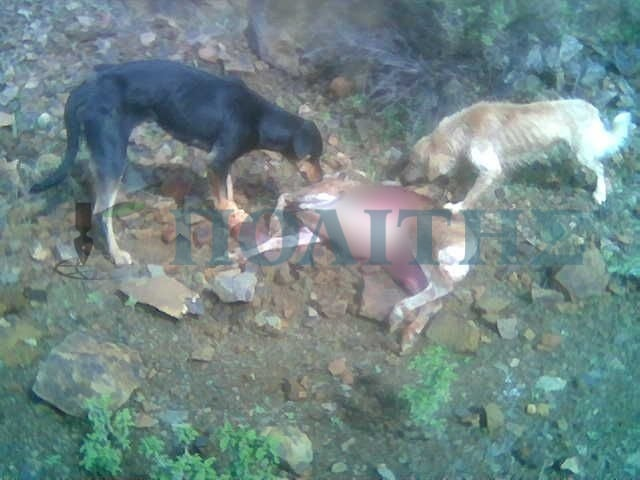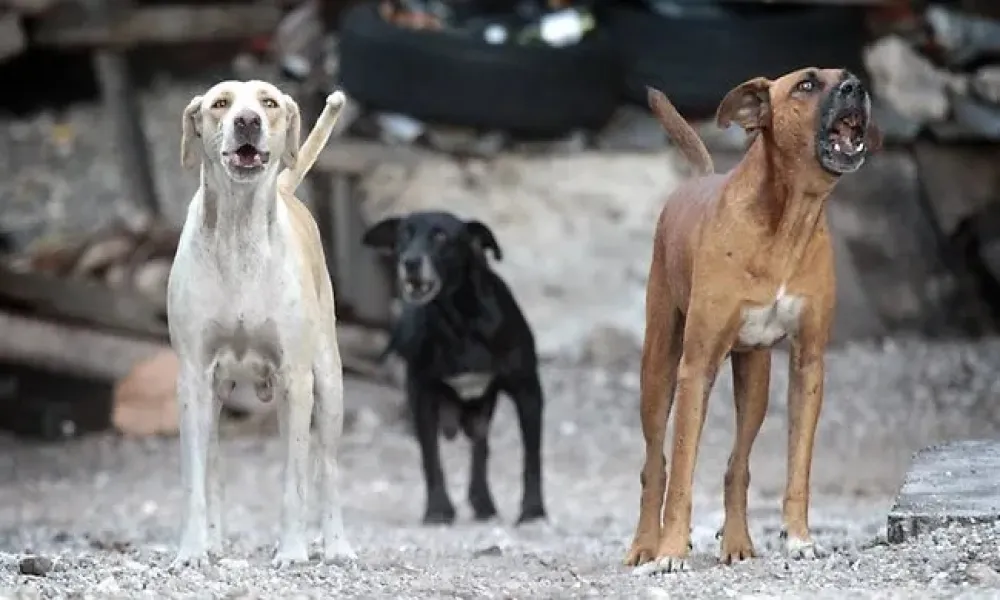The problem of stray dog packs remains unresolved and is growing year by year across Cyprus, with the situation in and around Paphos Forest becoming particularly alarming. In this area, stray dogs have adapted to the wild, forming packs that reproduce freely and pose a growing threat to both wildlife and humans.
Over the past six to seven years, these packs have been reported attacking people in the regions of Kampos, Tsakistra and Lefka, killing Cyprus mouflons (agrina) for food, and showing traces of Echinococcus infection, a parasitic disease that had been eradicated in Cyprus as a public health concern in the 1970s.
Hundreds of wild dogs
According to the Game and Fauna Service, hundreds of such stray dogs are now living across Paphos Forest, subsisting by hunting mouflons. Dozens of these animals have also been sighted in the northern areas of the forest, where residents on both sides of the divide express serious concern. A significant part of the problem lies along the Green Line, where the packs often retreat after attacks.
Across the island, in both the government-controlled and occupied areas, the total number of stray dogs is estimated at around 200,000. Reports of attacks on humans and domestic animals are frequent. Even dogs with milder behaviour have been involved in such incidents. Recently, residents of Kokkinotrimithia reported two packs preying on pet dogs, cats and poultry while foraging for food.
Mouflons killed, people attacked
The emergence of wild dog packs has become a matter of concern for both communities, prompting the Bi-communal Technical Committee on the Environment to seek solutions in recent months. The issue has been placed under the “environmental protection” pillar of the Green Measures for Confidence Building agreed between Greek Cypriots and Turkish Cypriots following the informal five-party meeting in Geneva last March and subsequent talks in New York in July.
“Because these wild dogs use the Green Line to escape after their attacks, the two communities must work together to address the issue,” said Michalis Loizidis, the Greek Cypriot Co-Chair of the Bi-communal Committee, speaking to Politis. “They carry diseases, mouflons are found devoured, and there have even been attacks on people collecting wild greens or mushrooms in the forest,” he added.
As the animals cannot be euthanised nor placed in shelters due to their feral nature, the Committee is reportedly considering proposing to the two leaders, Nikos Christodoulides and Tufan Erhürman, the creation of large fenced enclosures where these dogs could be contained.
Although discussions have begun, the proposal is still in its early stages, with no detailed design, costing or funding framework yet prepared. The project could potentially be financed through the United Nations Development Programme (UNDP) with EU support.

Engaging animal welfare groups
“This is a genuinely bi-communal project which, if it goes ahead, will require significant funding, time, a structured plan and committed people,” said Charalambos Theopemptou, Chair of the Parliamentary Environment Committee and MP for the Green Party.
He stressed that local communities such as Kampos and Tsakistra, along with animal welfare organisations, must be actively involved. “If the funds are made available, I believe the mechanisms can be found to ensure the effective participation of both sides,” he noted.
Fear of diseases
“This is a very serious problem. The dogs must be trapped, tested and dewormed, as Echinococcus can also infect humans,” warned Nikos Kassinis, Senior Officer of the Game and Fauna Service.
“It’s extremely difficult to capture these animals because of the terrain and vastness of Paphos Forest, as well as their nature. They are wild, aggressive and large, most likely born in the wild,” he explained. “Moreover, the current legal framework does not permit the use of firearms to control their numbers.”
Each year around this time, dozens of dead mouflons are found, a phenomenon linked to the mouflon breeding season (October to late November), when the animals move in large herds, making them easier prey for the wild dogs.
